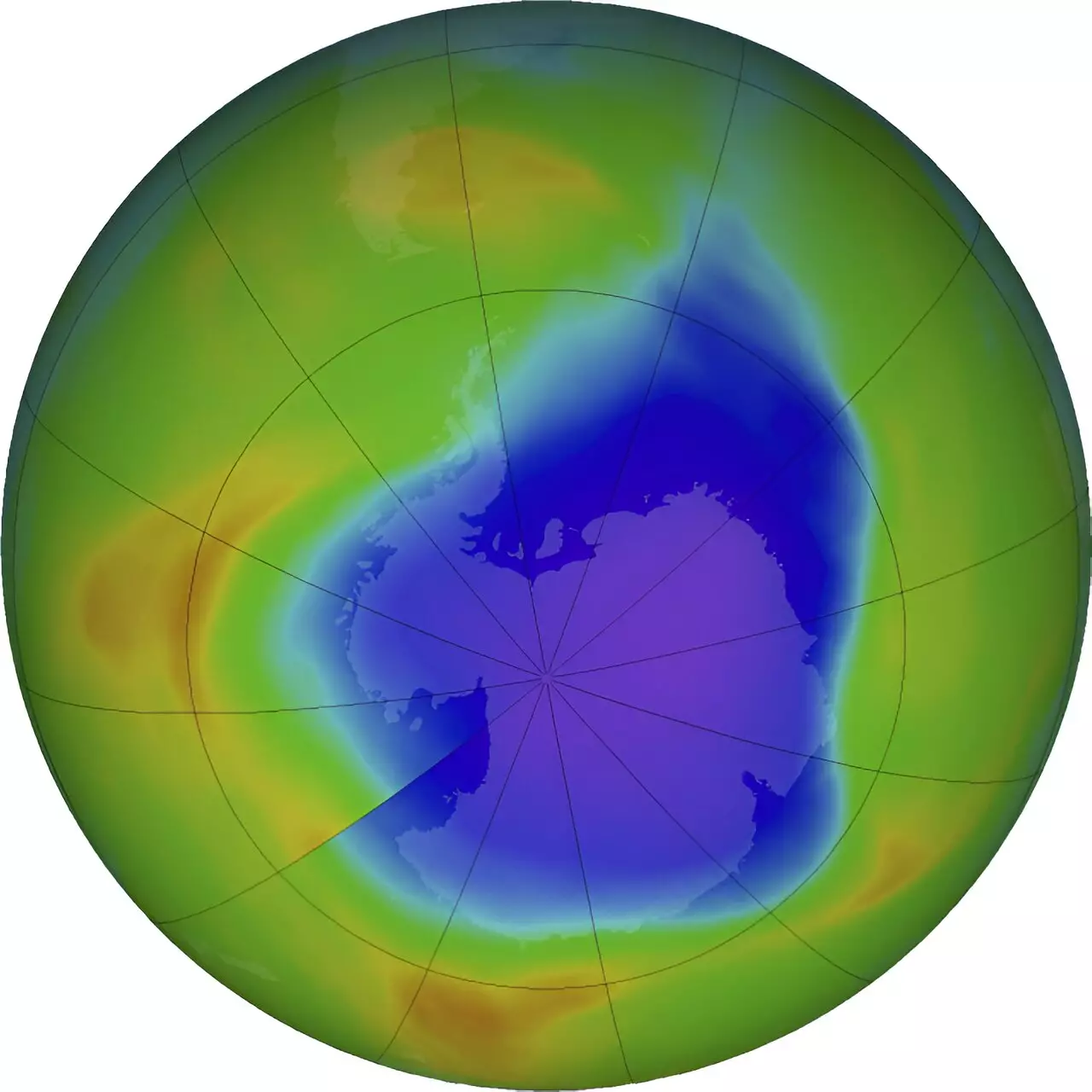The ozone hole has long been a cause for concern among scientists and environmentalists. With the recent eruption of an undersea volcano last year, experts were bracing for a significant increase in the size of the ozone hole in Antarctica this fall. However, to their surprise, the ozone hole remained relatively average in size, even smaller than the previous year. These unexpected results have prompted researchers to reexamine their understanding and computer models, questioning where they went wrong.
From September to mid-October of this year, the ozone hole measured an average of 8.9 million square miles (23.1 million square kilometers). Although this may sound like an expansive area, it is only the 16th largest since satellite tracking began in 1979. The peak size of the ozone hole in 2023 reached approximately 10 million square miles (26 million square kilometers), comparable to the size of North America. This may seem vast, but it falls within the range of what has been observed over the past two decades.
Ozone, composed of three joined oxygen atoms, plays a crucial role in shielding our planet from the sun’s ultraviolet rays. When located between 5 to 30 miles high (8 to 50 kilometers) in the atmosphere, ozone acts as a protective layer, preventing harmful UV rays from reaching the Earth’s surface. Without this layer, individuals are at risk of developing skin cancer, cataracts, and crops may even face sterilization.
The depletion of the ozone layer, which initially led to the formation of the ozone hole over Antarctica during September and October, is primarily attributed to chemicals found in aerosol sprays and refrigerants. These chemicals contribute to the destruction of ozone, causing the layer to thin and the hole to grow. Paul Newman, NASA’s ozone research leader, described the phenomenon as “massive in scale” and highlighted the challenges faced by individuals residing in the affected region of southernmost South America.
When the Hunga Tonga Hunga Ha’apai volcano erupted earlier this year, it injected an unprecedented amount of water into the southern hemisphere’s atmosphere. Scientists initially anticipated that this excess water, approximately 10% more than usual, would have a detrimental effect on the ozone layer. The presence of liquid water in the upper atmosphere provides a favorable environment for chlorine and bromine to accumulate, leading to the destruction of ozone and a larger ozone hole during the fall season.
To their surprise, researchers’ predictions were proven incorrect, leaving them wondering where their understanding and computer simulations went awry. Newman hypothesizes that the injected water froze out higher and at an earlier stage, resulting in fewer clouds and liquid water for the ozone-munching chemicals to latch onto. Additionally, local weather conditions can also contribute to variations in the size of the ozone hole.
While the ozone hole and thinning ozone layer have shown some signs of improvement, thanks in part to the 1987 Montreal Protocol, a global agreement to curb the production of ozone-depleting chemicals, a complete recovery is expected to take decades. The ozone hole reached its largest size in 2000, measuring nearly 11.6 million square miles (29.9 million square kilometers) based on NASA data.
The recent Antarctic ozone hole defied expectations by remaining an average size, contrary to predictions based on the eruption of an undersea volcano. The surprising results have prompted scientists to reevaluate their understanding and computer models, seeking to uncover the factors that led to the miscalculation. As the fight against ozone depletion continues, progress has been made, but full recovery remains a long-term endeavor.


Leave a Reply